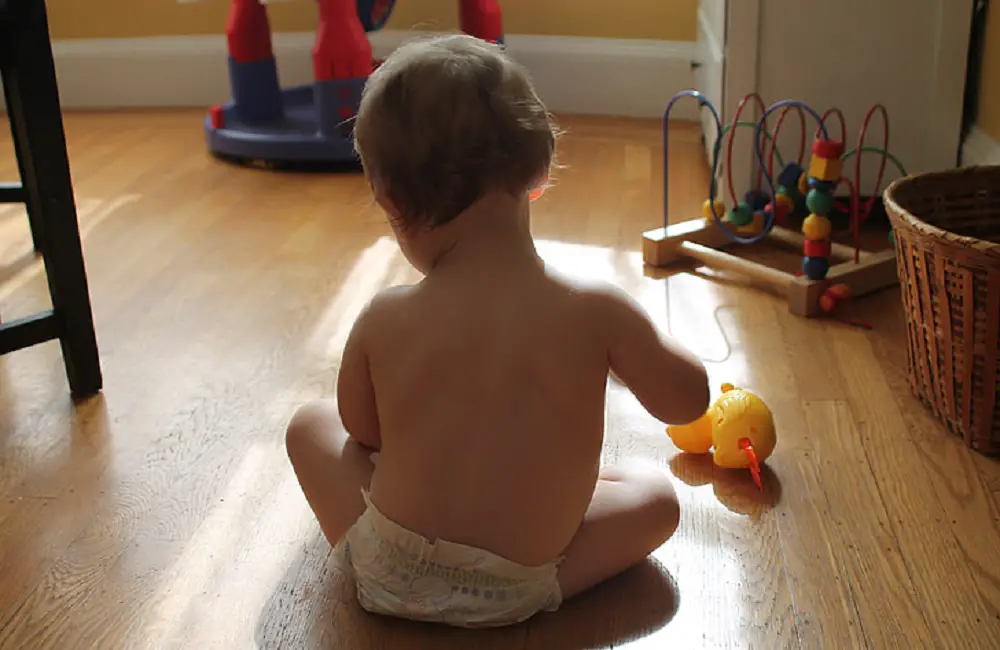Are you struggling with the challenge of maintaining a tidy home while raising kids? Is your living space cluttered with an abundance of toys, making it difficult to navigate without stepping on something?
Look no further! Discover the ten foolproof steps to effectively decluttering your home and keeping it organized for good. Additionally, I will provide you with invaluable tips on how to gain cooperation from your children throughout the process.
Does your child’s playroom resemble a toy explosion? Are you constantly battling against the ever-increasing numbers of scattered toys? If this sounds all too familiar, it might be high time to embark on a decluttering journey.
Creating a clutter-free environment for your children to play in is of great importance. It not only reduces anxiety and stress but also fosters creativity.
Now the question arises – where do you even begin? Fear not! I have prepared a comprehensive, step-by-step guide that will walk you through the process of decluttering your children’s toys.
Furthermore, this method instills in them the empowering mindset that less is indeed more. Rest assured, this tried-and-true approach has served me well since my children were toddlers and continues to prove effective even as teenagers.
1. Create Three Bins: Toss, Keep, Donate
To effectively organize your child’s collection, it is recommended to have three designated bins: one for items to be tossed, another for items to keep, and a third for items to donate.
As you evaluate each toy, carefully consider whether it should be discarded, retained, or given away. This systematic approach simplifies the process of sorting through your child’s belongings, making it a breeze to manage and declutter their collection.
2. Move Quickly
When going through your child’s collection swiftly, it is crucial to move with efficiency. As you involve your child in the process of decluttering toys, take the time to explain why certain items are being donated or discarded.
Although this may present challenges, it is important to help your child comprehend the significance of letting go. Additionally, discuss the positive impact that the donated toys can have on other children. By doing so, you can cultivate a sense of empathy and generosity in your child while decluttering.
3. Toss Broken Toys
It is imperative to promptly discard broken toys as they pose a potential hazard to children. Broken toys may have sharp edges that can cause cuts or small parts that can be swallowed.
Even if the broken toy holds sentimental value as your child’s favorite, it is crucial to prioritize their safety and dispose of it immediately. Rest assured that by doing so, you are ensuring their well-being and preventing any potential harm.
4. Set a Limit
It is advisable to establish a limit on the number of toys your child can possess. One effective approach is to designate separate bins for each type of toy, ensuring that each bin is not exceeded in terms of capacity.
This encourages your child to make informed decisions regarding their toy collection, either by eliminating existing toys prior to acquiring new ones or by refraining from obtaining additional toys if the allocated bin space is already filled. Such a practice promotes organization, decluttering, and responsible ownership.
5. Use Bins to Contain Toys
Storage bins can prove to be an invaluable asset for parents. These versatile containers not only provide a designated space for toys but also aid in keeping them neatly organized. By affixing labels, you can facilitate easy identification and teach your child the importance of tidying up after playtime.
For younger children who are unable to read, using visual cues such as pictures can serve as a helpful alternative. Incorporating these strategies into your toy storage system can contribute to a more organized and visually appealing environment for your child.
6. Encourage Kids to Let Go
Children possess a remarkable level of empathy and understanding. Take a moment to sit down and have a conversation with your child about the less fortunate kids who may not have access to toys.
By encouraging your child to donate some of their toys, you can help provide these children with the opportunity to experience the joy of play. Sharing what they have can make a positive impact in the lives of others and foster a sense of compassion and generosity in your child.
7. Recycle Puzzles and Board Games with Missing Pieces
Missing pieces from puzzle and board games can be repurposed for craft projects. For instance, puzzle pieces can be transformed into unique and stylish pieces of jewelry.
Additionally, old board game boards can be framed and utilized to enhance the aesthetic appeal of a playroom. Embrace your creativity and consider donating games that haven’t been played with for an extended period of time. By doing so, you can give these games a new life and bring joy to others.
8. Rotate Toys
To increase your child’s engagement with their toys, consider implementing a toy rotation system. Begin by selecting half of their toys and storing them. Every three months, rotate out the toys in use, introducing the stored toys back into their playtime routine.
By periodically providing a fresh set of toys, your child will experience the excitement of new playthings without incurring additional expenses. This method can effectively enhance their playtime experience and stimulate their imagination.
9. Use the Buy One Get Rid of Two Rule
To encourage responsible toy management, you can establish a rule that whenever your child wishes to add a new toy to their collection, they must choose and donate two toys from their existing stash. This practice not only prevents their toy collection from becoming overwhelming but also cultivates the valuable lifelong skill of reducing impulsive purchases.
By implementing this strategy, you can instill a sense of responsibility and thoughtful decision-making in your child while ensuring that their toy collection remains manageable.
10. Remember That Less Is More
Research suggests that children tend to play more with fewer toys. If you notice that your child quickly loses interest in new toys, it may be worth considering the frequency of toy acquisition. Limiting the number of toys can also stimulate creativity by encouraging resourcefulness and imaginative play.
Final Thoughts
Toy collections can often become overwhelming and disorderly. It is important to invest time in guiding your child through the process of decluttering their toys. This not only promotes a deeper sense of appreciation for their belongings but also encourages them to engage with a wider variety of toys, fostering their imagination and creativity.

